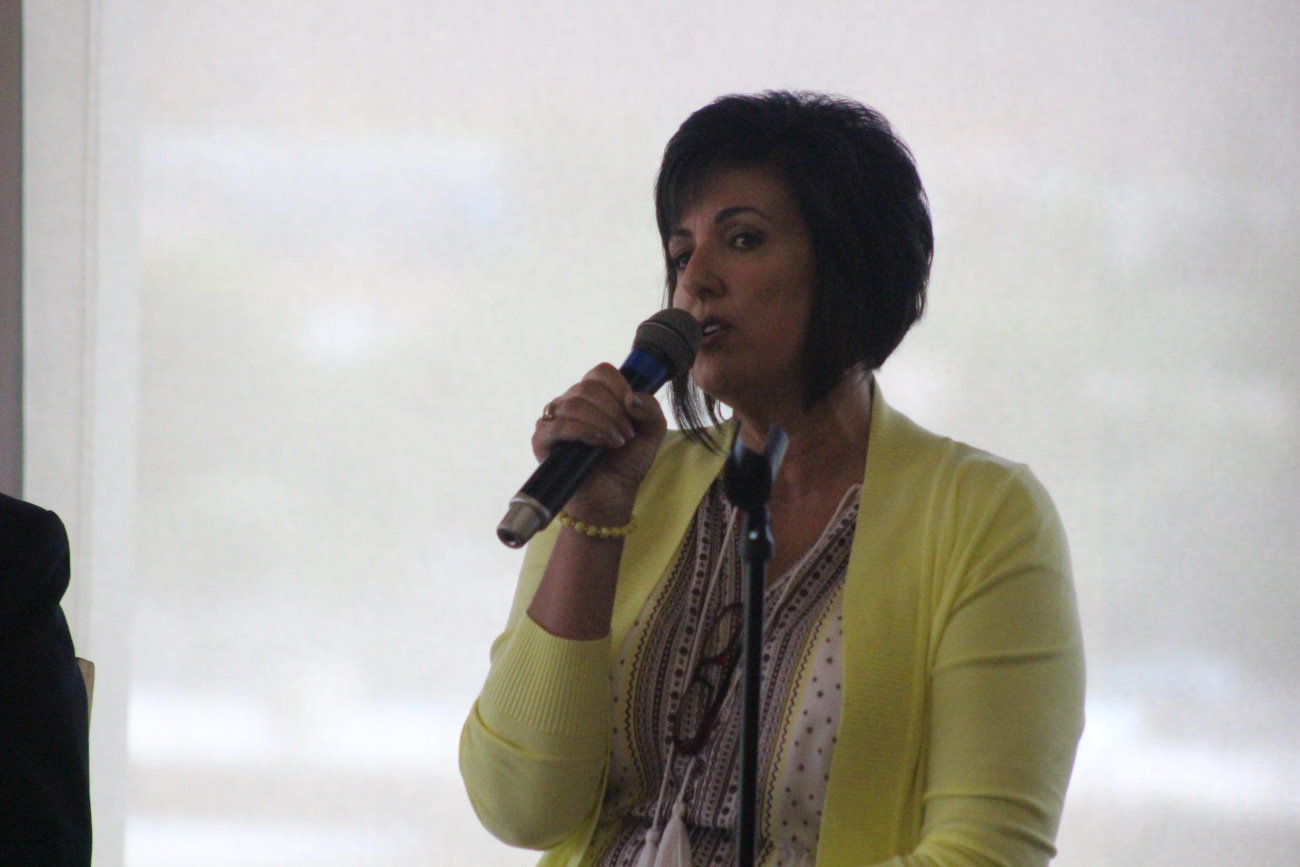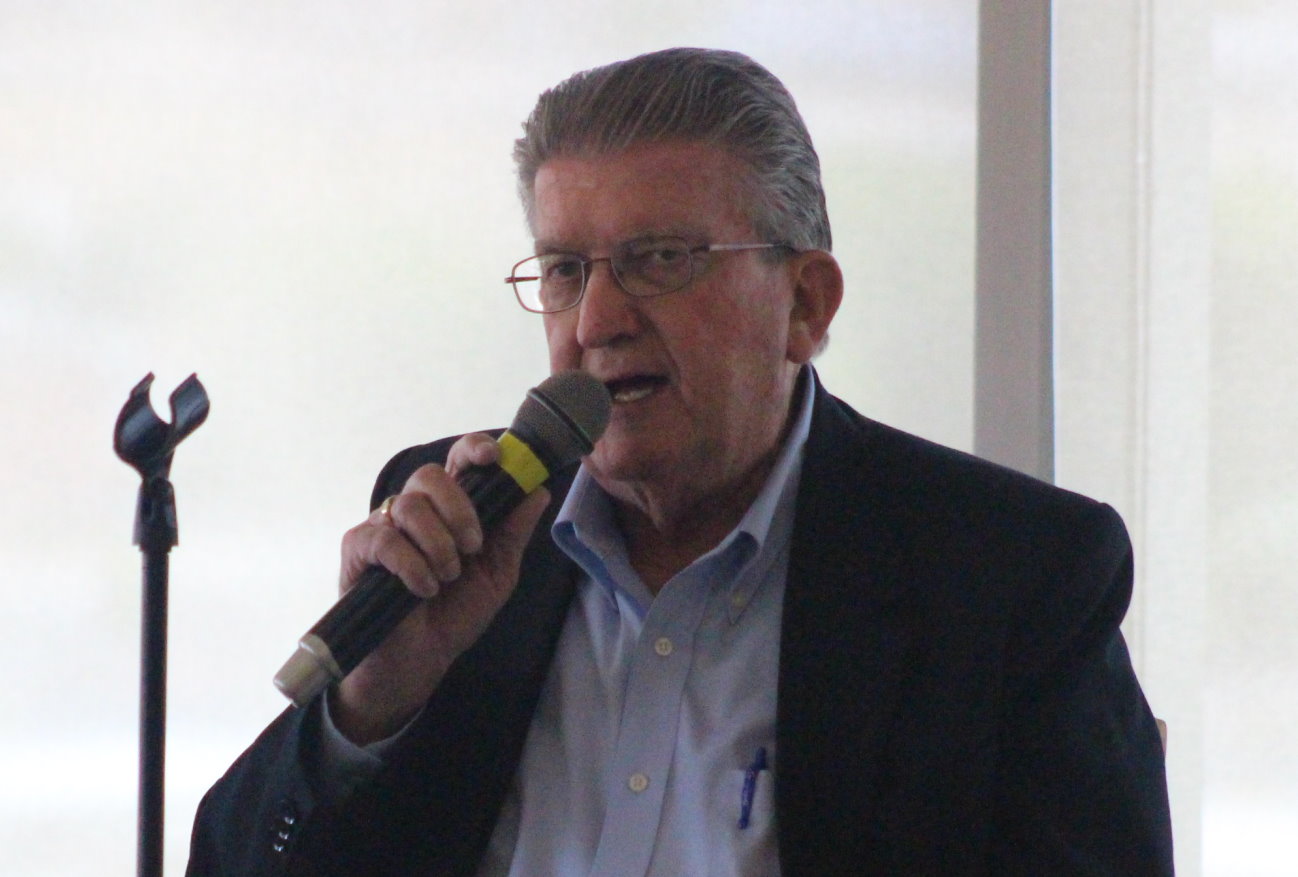
ST. GEORGE – Topics related to the growth of Washington County’s largest city were highlighted during a candidate forum held Wednesday for those running for St. George City Council.

Hosted at Dixie State University by the St. George Area Chamber of Commerce, all six candidates running for City Council were present at a forum that also featured Washington City Council candidates.
Attending were incumbents Michele Randall and Joe Bowcutt and challengers Gregg McArthur, Bryan Thiriot, Marc Stallings and Greg Aldred.
Three questions were given to the candidates concerning how well they feel St. George is following the concepts laid out in Vision Dixie, opinions on water use and if they support the contested Northern Corridor.
With the exception of water when it came to the proposed Lake Powell Pipeline, the candidates largely agreed on the subjects.
Each said they felt St. George is following the concepts laid out by Vision Dixie to various degrees. Produced just over a decade ago, Vision Dixie is a smart growth guide for Washington County communities planning for the region’s increasing population.

“The short answer to me is ‘yes,’ I believe we are following Vision Dixie,” Thiriot said, who currently serves as the executive director of the Five County Association of Governments.
“It’s not a dictating plan, it’s a guiding plan,” he said.
One of the tenets of Vision Dixie, however, is providing a broad range of housing types that meet the needs of all income levels. St. George itself has an affordable housing issue, McArthur said.
“I think the city is doing a really neat job, but there are some challenges,” McArthur said. “Housing’s starting to become unfavorable. I think we have an affordable housing issue. I think there are ways we can address that.”
McArthur, who works at NAI Excel as its director of hospitality and is a former president/CEO of the St. George Area Chamber of Commerce, said the city could look at reworking its impact fees and promote ways to bring in more affordable housing projects.

Bowcutt said the city is following a five-year strategic plan that ties into elements of Vision Dixie.
On water, the majority of the candidates expressed their support for the proposed Lake Powell Pipeline with the exception of Stallings and Aldred.
Aldred, a local businessman and previous Washington County Commission candidate, supports an idea of getting water from the Snake Valley in Nevada instead of the Lake Powell Pipeline. He did not directly mention the pipeline, however.
“We need to look to every resource we can for that precious gold, as we call (water) in the desert,” Aldred said. “Now, what I think we’re all concerned about is ‘what’s the cost?’ … So when the numbers are clear, I do support water in any way I can.”

Stallings, who works at Nielson RV, called water one of his “hot topics” and stressed the need for water conservation as well as the exploration of additional water resources but not necessarily the Lake Powell Pipeline due its potential $2 billion-plus cost.
“We can’t guarantee the Colorado River can sustain such a project,” Stallings said. “We need to look at conservation and the aquifers and our other resources available to us. The pipeline isn’t the only solution, folks.”
In the end, the pipeline may very well be the best solution, Stallings said, but he’s not on board with the project right now either.
Read more: Utah delegation asks Trump for ‘expedited’ review of Lake Powell Pipeline
All of the candidates expressed favor for the Northern Corridor, a proposed route that would go from Interstate 15 and possibly connect with Red Hills Parkway or state Route 18. The corridor is a contested issue, though, due to it cutting through the Red Cliffs National Conservation Area where federally protected desert tortoise habitat is located.
Supporters say the Northern Corridor is needed so traffic in St. George and the surrounding area doesn’t become a gridlocked nightmare due to the continuing growth projected to occur in the coming years and decades.

“I’m not sure how, as we continue to grow, you get people around in St. George. We’re a little landlocked between the Red Hill, the Black Hill and the Virgin River,” Randall said. “You need that land to get traffic from east to west. I think we can do it (in a way) to appease everybody and get it done.”
Read more: Planners: Congestion inevitable, but northern corridor would help
Environmental advocacy groups and some federal agencies that oversee the area aren’t exactly keen on the idea of a roadway cutting through the tortoise habitat. As such, the issue of the Northern Corridor is being addressed on the congressional level.
“Without the Northern Corridor we will continue to have increasing gridlock,” Bowcutt said. “I think it can be done and protect the environment that we need up there and still give us some options to move traffic around.”
The primary election is set for Aug. 15, with early voting starting Aug. 1.
Email: [email protected]
Twitter: @MoriKessler
Copyright St. George News, SaintGeorgeUtah.com LLC, 2017, all rights reserved.
The choice appears to be is how fast do you want the area turned into another LARGE metropolitan area. All but one endorsed the now $2 BILLION Lake Powell pipeline so growth can continue at a swift pace. Of course, all are in favor of ‘the’ northern corridor though the preserve (not one said let’s consider one that is outside the preserve). So buckle up and watch how fast things happen. Four candidates are all out growth enthusiasts while two may want a degree restraint (but not a lot). There will be growth and the question is how much how fast. Time to pay attention is now.
Interesting to see that some people want to see St. George turn into the driving disaster of the Salt Lake area over a bunch of tortoises. If the city doesn’t start planning roads systems for a large populated city now, St. George will turn into a parking lot like Salt Lake.
Aww Heck, put Turtle Soup on the Menu and start bulldozing the reserve….we gots to build more homes for these folks from Californi’ ‘fore the boom goes bust again …..there’s money to be made on these foolish city folks wanting to live in the desert